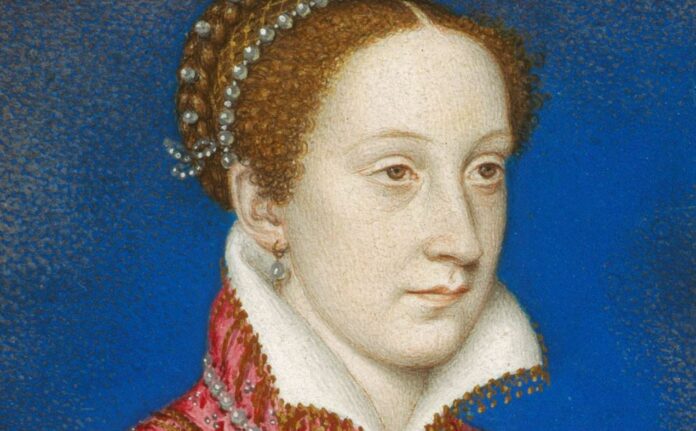International codebreakers uncovered secret, coded letters written by Mary Queen of Scots during her imprisonment in England by Queen Elizabeth I.
The contents of these letters were believed to be lost for centuries until a team consisting of computer scientist George Lasry, pianist and music professor Norbert Biermann, and physicist and patents expert Satoshi Tomokiyo discovered them while searching for enciphered documents in the online archives of the Bibliothèque nationale de France.
The team of codebreakers only identified Mary as the author after solving her complex cipher system. Their decipherment of 57 letters, published in the peer-reviewed journal Cryptologia, unveiled approximately 50 previously unknown scripts to historians.
These letters date from 1578 to 1584, a few years before Mary’s execution on February 8th, 1587, 436 years ago.
Mary’s letters offer intriguing insights into her imprisonment. Most are addressed to Michel de Castelnau de Mauvissière, the French ambassador to England and a supporter of Catholic Mary. She wrote them while under the custody of the Earl of Shrewsbury.
Lead author Lasry, who is also part of the multi-disciplinary DECRYPT Project, said, “Upon deciphering the letters, I was very, very puzzled and it kind of felt surreal.”
The DECRYPT Project, involving multiple universities in Europe, aims to map, digitize, transcribe, and decipher historical ciphers.
Breaking secret codes from kings and queens is always interesting, but deciphering so many unpublished letters of Mary Queen of Scots was truly “remarkable”, especially because she is such a well-known figure, according to the lead author.
“This is a truly exciting discovery.”
The letters, which total about 50,000 words, provide a significant amount of new primary material on Mary Stuart and shed new light on her years of captivity in England.
Mary, Queen of Scots, left an extensive collection of letters held in various archives, but evidence indicates that other letters from her were missing from those collections, including those mentioned in “other sources but not found elsewhere.”
“The letters we have deciphered … are most likely part of this lost secret correspondence.”
Mary, one of the most famous historical figures of the 16th century, was first in line for the English throne after her cousin Elizabeth. Catholics recognized her as the legitimate sovereign, and Elizabeth had her imprisoned for 19 years due to a perceived threat.
Eventually, Mary was executed at the age of 44 for her alleged involvement in a plot to kill Elizabeth. During her captivity, Mary communicated with her allies and associates through extensive measures to secure secret messengers and maintain secrecy.
The confidential communication channel between Mary and Castelnau is well-known to historians and was even recognized by the English government at the time.
Lasry and his team of codebreakers have provided new evidence that the exchange between Mary and Castelnau was in place as early as May 1578 and continued until at least mid-1584.
The authors used a combination of computerized and manual techniques to decode the letters, which reveal the difficulties Mary faced in keeping connections with the outside world, as well as the methods for carrying and delivering the letters.
The main subjects of Mary’s letters are her concerns about her ill health and the circumstances of her captivity, as well as her talks with Queen Elizabeth I for her release, which she feels are not done in good faith.
She also makes clear that she distrusts Elizabeth’s spymaster Sir Francis Walsingham and dislikes Robert Dudley, Earl of Leicester and a favorite of Elizabeth. She also explains how she feels abandoned by France when her son James, who would grow up to become king of England, is kidnapped in August 1582.
Lasry and his co-authors explain how they originally came upon the letters in this Special Issue of Cryptologia. Some of them were encoded in a large collection of unmarked papers using the same set of graphical symbols.
The BnF catalogue described the letters as from the first half of the 16th century and related to Italian matters, but the authors of the study soon realized that they were written in French and had no connection to Italy after beginning to decode the code.
Their investigation revealed the use of feminine verbs and adverbs, several references to captivity, and the name “Walsingham,” which raised the possibility that they were written by Mary, Queen of Scots.
The authors confirmed that the letters were written by Mary, Queen of Scots by comparing them to the plaintext of letters in the papers of Walsingham at the British Library and through other methods.
Their search in the BnF collections uncovered 57 letters using the same cipher. Mary Queen of Scots expert, John Guy, who wrote the 2004 biography of Mary that inspired a major Hollywood film, called this discovery the most significant find about Mary in a century.
“This discovery is a literary and historical sensation. Fabulous! This is the most important new find on Mary Queen of Scots for 100 years. I’d always wondered if de Castelnau’s originals could turn up one day, buried in the Bibliotheque Nationale de France or perhaps somewhere else, unidentified because of the ciphering.
“And now they have.”
Lasry and his team also suggest that there may be additional encoded letters from Mary that are still unaccounted for. They recommend further physical inspections of documents and online searches to uncover them. The study is expected to serve as the foundation for future research.
According to Lasry and his co-authors, only a preliminary interpretation and summary of the letters are presented in their paper. Further analysis by historians could provide deeper insight into Mary’s time in captivity, they suggest.
Additionally, they express the desire to collaborate with historians to create an edited volume of her deciphered, annotated, and translated letters.
“It would also be great, potentially, to work with historians to produce an edited book of her letters deciphered, annotated, and translated.”
Source: 10.1080/01611194.2022.2160677
